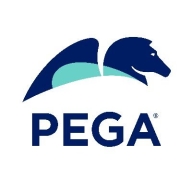

Pega Platform and Flowable are competing in the business process management category. Flowable has an edge in flexibility and customization, while Pega Platform stands out for its support and ecosystem.
Features: Pega Platform is recognized for its powerful automation capabilities, comprehensive analytics tools, and streamlined handling of complex processes. Flowable offers a flexible, customizable process engine, open-source offerings, and integration capabilities. These features highlight Pega's completeness and Flowable's adaptability.
Ease of Deployment and Customer Service: Flowable provides a flexible deployment model with on-premise and cloud options, offering adaptability to various infrastructures. Pega Platform supports a guided setup with a strong support network. Flowable's deployment is less resource-intensive, whereas Pega provides valuable support during implementation.
Pricing and ROI: Pega Platform incurs higher upfront costs with significant ROI through reduced inefficiencies over time due to its feature set and support. Flowable's setup is low-cost, making it appealing for cost-effective solutions. Pega offers comprehensive service value, while Flowable provides a cost-effective adaptable return on investment.


Flowable is a versatile software that streamlines and automates business processes. It is commonly used for workflow management, task automation, and digital transformation initiatives.
Users also utilize Flowable for document management, case management, and customer journey mapping. Its valuable features include efficient workflow management, seamless integration capabilities, and a user-friendly interface.
Flowable allows for smooth collaboration and task automation, and its ability to integrate with other systems and applications enables a seamless flow of information.
The intuitive and easy-to-use interface makes it accessible to users of all technical backgrounds.
Pega Platform facilitates business process management, case management, and workflow automation for industries like banking, insurance, and healthcare. It supports digital transformation and customer service enhancements with its low-code capabilities and seamless integrations.
Pega Platform enables users to create efficient systems for case management, financial operations, and digital transformations. It provides tools for client onboarding, quoting, claims processing, customer experience improvements, and content management. Pega's low-code approach allows for the automation of complex processes, making it suitable for enterprises looking for adaptability and rapid deployment. While it offers strong real-time analytics and decision automation, users acknowledge challenges in user interface, integration, and performance aspects. High costs and a learning curve need attention, and enhancements in AI features and cloud services are desired.
What are the key features of Pega Platform?In banking, Pega Platform automates loan processing, accelerates customer onboarding, and manages compliance. Insurance companies benefit from streamlined claims processing and policy management. Healthcare sectors use the platform for patient engagement and care coordination, enabling organizations to adapt quickly to changing industry requirements.
We monitor all Process Automation reviews to prevent fraudulent reviews and keep review quality high. We do not post reviews by company employees or direct competitors. We validate each review for authenticity via cross-reference with LinkedIn, and personal follow-up with the reviewer when necessary.